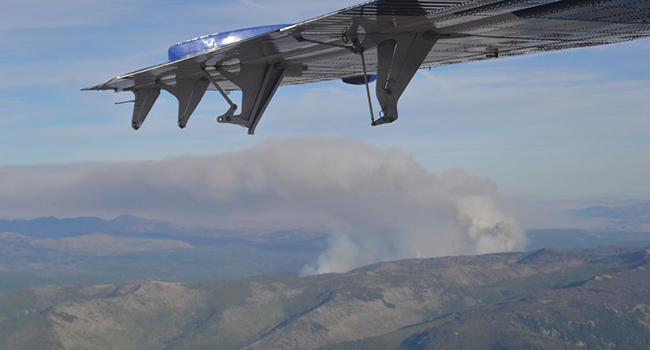A .gov website belongs to an official government organization in the United States.
A lock () or https:// means you've safely connected to the .gov website. Share sensitive information only on official, secure websites.

CSL air quality research has three focal points: (1) characterizing emissions and emission trends; (2) understanding chemical, physical, and radiative processes that influence atmospheric composition; and (3) boundary layer dynamics and transport processes at all scales, from local to global.
CSL studies the processes that influence air quality on local, regional, and global scales to support informed air quality decision-making at local, state, national, and international levels. Air quality research encompasses the study of both directly emitted and secondary pollutants. The sources and the distribution of major anthropogenic (human-caused) emissions have changed dramatically over decades, continually redefining research needs. Secondary pollutants, such as ozone (O3) and particulate matter (PM), form through complex chemical reactions in the atmosphere and directly influence human health. Air quality impacts arise from a complex interaction of a wide array of natural and human-caused emissions, background atmospheric composition, meteorology, and long-range transport.
Emissions from the transportation sector have primarily been responsible for contributing to poor air quality. However, those emissions have been substantially reduced by regulation, and now other sources, such as volatile chemical products (VCPs) are becoming relatively more important. These newly recognized sources influence the chemistry of ozone and PM2.5 formation and require new research strategies (e.g., advanced analytical instrumentation) to understand. A warming climate has also contributed to air quality issues with more frequent large wildfires, especially in the western U.S., that emit massive quantities of species (e.g., aerosols, CO, nitrogen oxides) that degrade air quality locally, but also transform chemically during transport and degrade air quality in regions far downwind.
To more fully understand the chemical and physical processes responsible for changes in air quality, simultaneous deployment of a large suite of measurements is critical, including those for gas phase species, aerosol species, and physical parameters. While CSL has extensive measurement capabilities, to reach the scientific objectives of field missions, such as the Fire Influence on Regional to Global Environments and Air Quality (FIREX-AQ) study, CSL actively engages in collaborations with other organizations. To fulfill mission objectives CSL also utilizes different types of sampling platforms, including aircraft, ships, mobile vans, and unmanned aircraft systems (UASs).
Understanding atmospheric transport and mixing processes is essential for improving air quality predictive capabilities, but measurements of these processes are difficult. CSL research into developing and deploying remote sensing instruments has proven critical in advancing this understanding. On regional and larger scales, O3 lidar has demonstrated that long-range transport in both horizontal and vertical dimensions can be a significant factor in local air quality exceedances of O3. Doppler lidars have been developed and deployed at CSL that measure wind fields in complex terrain. These observations, for example, inform the placement of wind turbines for renewable energy production. Smaller Doppler instruments have been developed for aircraft and are used to determine complex flows in urban areas and coastal regions.
CSL research improves the predictive capability that is essential for air quality management and forecast applications, including a demonstrated capability in working with stakeholders to identify their needs up front, and then communicating research results to air quality decision-makers in a timely, user-friendly manner. For example, national policy, such as the push to increase domestic energy production via oil and natural gas development, has led to significant impacts on regional and local air quality. CSL research is addressing this and other emerging air quality issues through laboratory studies, instrument development activities, intensive field studies coupled with model analysis, and providing the resulting scientific information to users.